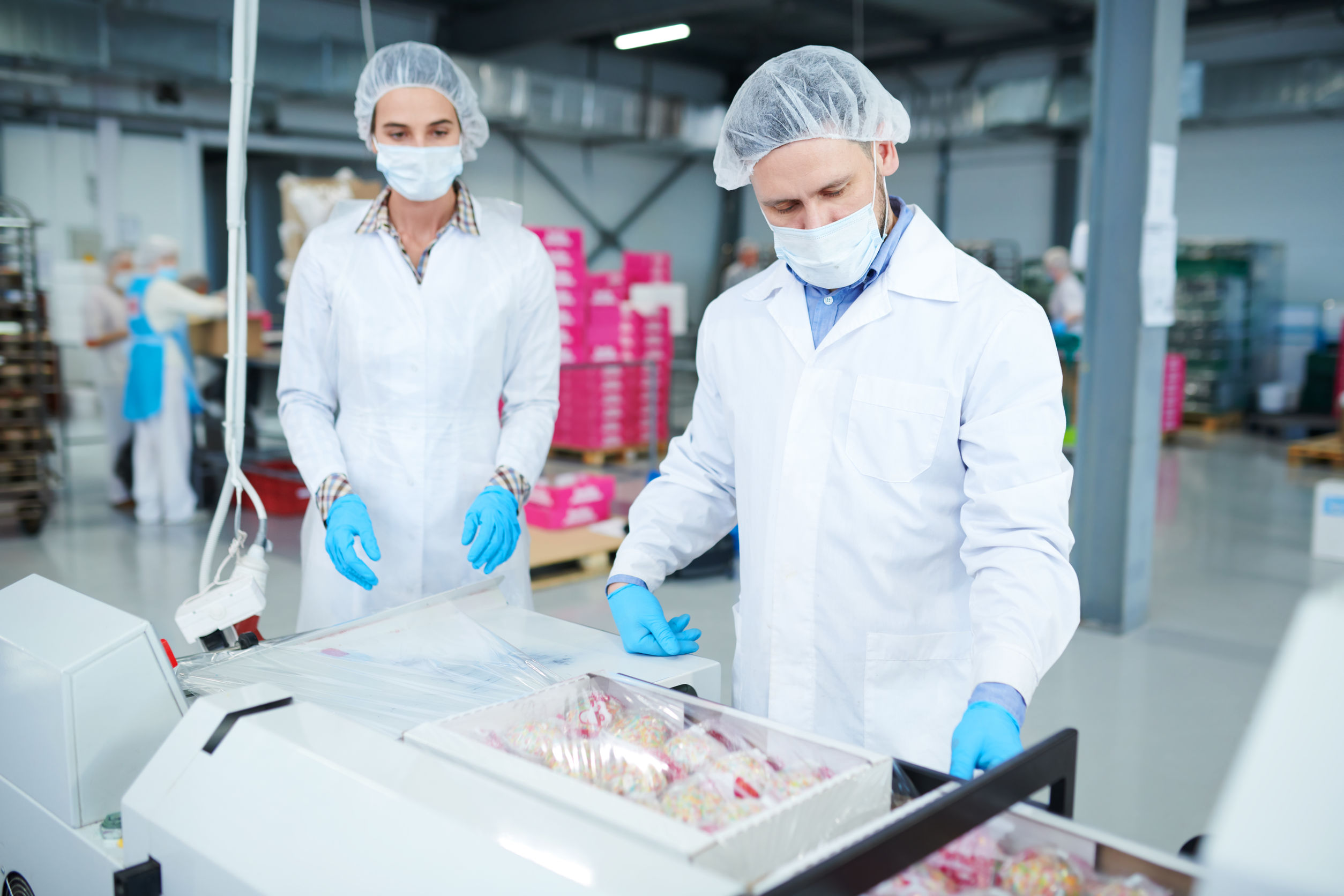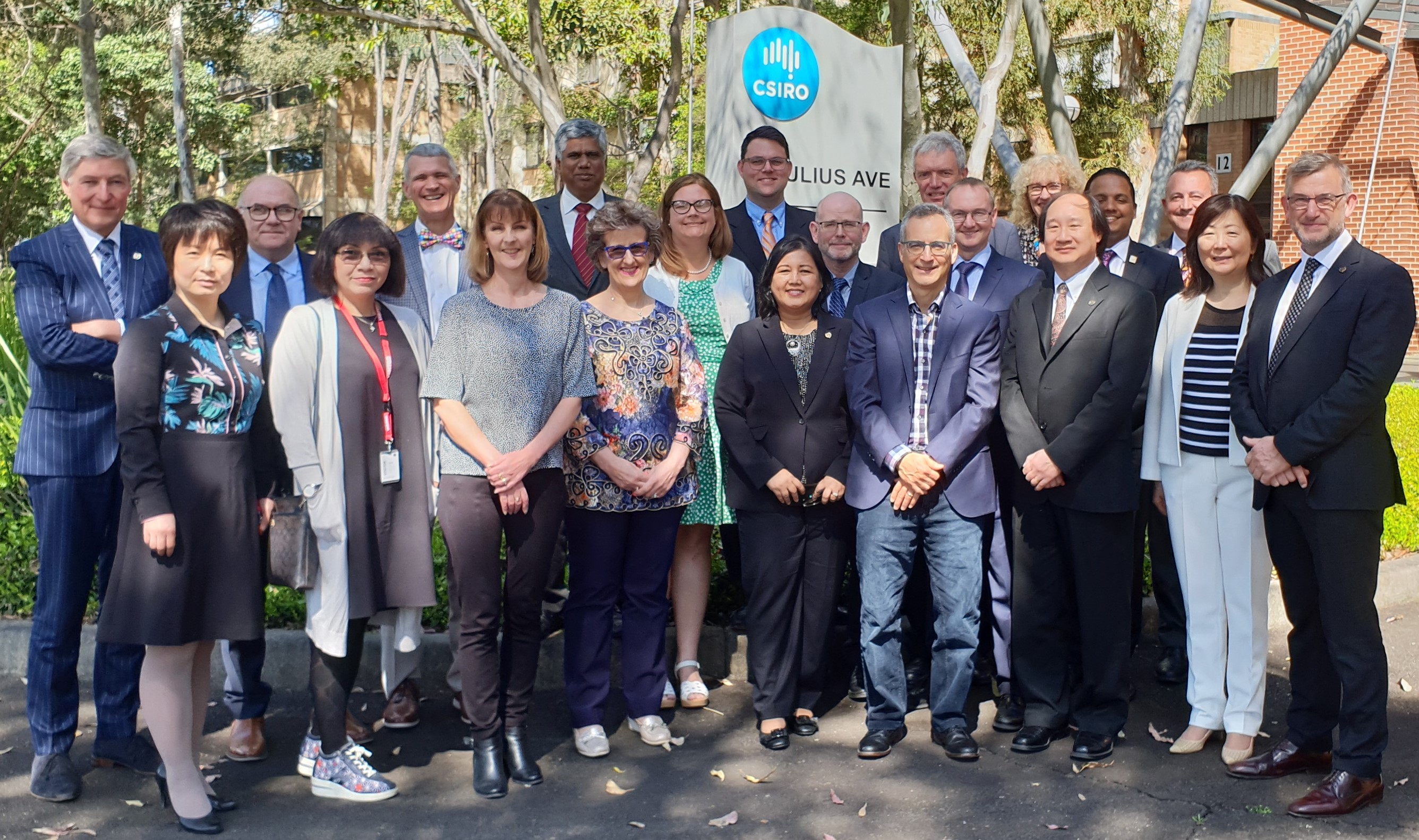Ensuring food safety during the COVID-19 pandemic - a Codex observer view
Science and Codex guidelines help food businesses
By Leon Gorris, Secretary of the International Commission on Microbiological Specification for Foods (ICMSF)

Ensuring food safety is a public health priority and an essential step to achieving food security. While we are celebrating World Food Safety Day on 7 June 2020, we remind ourselves that food safety is everyone’s business. We all play a role, e.g. food growers, processors, distributors, retailers and consumers.
Around the globe about 7 Million people have been infected by the coronavirus disease: COVID-19. Whilst this virus is not a foodborne illness, it may be perceived as causing 'food unsafety', it causes major loss of life and health, as well as disruptions in the production, trade and distribution of food to the extent food security is affected in several geographies. Low and Middle Income Countries are amongst the most challenged.
To combat the virus and its spread most effectively, it is important to understand the science behind the COVID-19 illness and the characteristics of this novel virus. Science is quickly developing, and key insights are important clues for any business, including food businesses, for instance:
- COVID-19 is primarily a respiratory illness, which is mainly transmitted directly from person-to-person via droplets of saliva or discharge from the nose. Less frequent routes may be transmission of virus particles directly via aerosols and indirectly via cross-contamination of for instance surfaces. The virus may cause illness when it gains access to the lungs and other tissues through the respiratory tract and the mucosal tissues of healthy people. Illness may vary from very mild to severe, even resulting in death.
- While the illness varies in severity, to cause infection, both the presence of viable virus particles and a sufficiently high numbers of viable particles is required. The higher the viable number (or dose) present, the more likely infection is and the more likely the outcome may be severe. Virus particles may survive for hours to days on surfaces, but dramatically lose viability and number.
- There is no evidence that food is a source or important transmission route for the COVID-19 illness. The presence of viable virus particles on food is low and the virus cannot multiply in foods. Food is often treated such that micro-organisms, including viruses, are killed or inactivated. Once food is eaten, it enters the gastro-intestinal tract where the gastric acids of the stomach likely will inactivate the viruses.
Businesses should take measures to protect their workforce
Whilst COVID-19 is not a foodborne illness, it is a major threat to public health, including for consumers and food workers. Food businesses, like any other type of business, should therefore take measures to protect their workforce from illness and contribute to avoiding and minimizing the spread of the virus.
Food businesses can take advantage of the good hygienic practices and food safety management systems (such as HACCP) that they have implemented on the basis of Codex Alimentarius guidelines, which have been compiled on the general principles to ensure hygiene in food operations as well as for specific food sectors:
- The good hygienic practices adopted are the foundation for ensuring food safety, and also form a strong basis for minimizing people-to-people spread and cross-contamination of COVID-19 in food operations. Notably, existing personal and food hygiene measures need to be reviewed and possibly strengthened in terms of staff activities (in all premises, e.g. incl. toilets, canteen), operation logistics and lay-out, use of personal protective equipment (PPE), such as face masks.
- The overall food safety management system that tailors good hygienic practices and additional food safety measures to the specifics of the food operation may already include measures such as physical separation of activities (zoning), as well as cleaning, sanitation and disinfection of hands, tools, equipment and environment. This system should be reviewed for any impact of worker illness and capacity reduction on the one hand and for its contribution to minimizing the spread of the virus in the operation.

Upgraded safety measures to avoid workers becoming infected
These food safety measures need to be “upgraded” or “complemented” by measures that help avoid and minimize workers getting infected and the virus spreading in the food business operation, including:
- Physical separation of workers and other staff in all premises of a business operation. Keeping 1.5 or 2 meters (6 feet) distance strongly reduces the likelyhood of person-to-person transmission through droplets;
- Installing physical barriers between workers and/or workbenches and adequate ventilation to control infections through droplets and aerosols;
- Improved cleaning, disinfection and sanitation measures such that the coronavirus is controlled, and cross-contamination is minimized;
- Training of food workers and other staff regarding the importance of personal hygiene generally and personal hygiene and personal protective equipment (PPE) instructions tailored to their responsibilities in the operation
- Instruction of employees in recognizing the symptoms of COVID-19 and ensuring ill employees do not come to work but take appropriate measures (e.g. self-quarantine).
Also, external vulnerabilities for the operation need to be considered when reviewing the necessary measures to avoid/minimize the spread of COVID-19. For instance, disruptions in food production, the food supply chain, trade that relates to control of COVID-19 by other parties and impact on a business workforce or external inspections. Such conditions may include economical pressures on workers and their families, housing and transport conditions, literacy, etc. that make it difficult for workers to follow the strict COVID-19 mitigation measures of for instance abstaining from work, physical distancing, personal hygiene.
While food safety measures and occupational safety measures target different aspects of consumer safety and worker/public health, the two together are complementary and, with a properly upgraded system, responsible food businesses will be able to significantly contribute to the protection of the health of their employees and consumers, as well as to their responsibility to help control the spread of COVID-19 in society.
Science and Codex guidelines provide essential inputs into making the upgrade possible and a target for effective COVID-19 mitigation whilst continuing to ensure food safety.
Did you know?
ICMSF is a small global Non-Governmental Organization and Observer to Codex Alimentarius. Its goal is to be actively contributing to development and communication of scientific concepts to help to reduce the incidence of microbiological foodborne illness and food spoilage.

ICMSF members and consultants meeting in Sydney, Australia, for the 52 annual meeting on global food safety management matters
Views of ICMSF and its member on COVID-19 illness and its impact on food safety as well as the importance of general and food hygiene in illness mitigation are posted here.
Learn more about ICMSF: http://www.icmsf.org/in-the-news/announcements/
At the heart of the Codex mandate are the core values of collaboration, inclusiveness, consensus building and transparency. Governmental and non-governmental, public and private organizations alike play a vital role in ensuring Codex texts are of the highest quality and based on sound science.
Codex would have little authority in the field of international standard setting if it did not welcome and acknowledge the valuable contributions made by observers. Expert technical bodies, industry and consumer associations
contribute to the standard-setting process in a spirit of openness, collaboration and transparency.
Intergovernmental organizations (IGOs) and international non-governmental organizations (NGOs) can apply for observer status in Codex in order to attend and put forward their views at every stage of the standard-setting process.
 Current Codex Alimentarius Commission
Current Codex Alimentarius Commission
Ensuring food safety during the COVID-19 pandemic - a Codex observer view
Science and Codex guidelines help food businesses
By Leon Gorris, Secretary of the International Commission on Microbiological Specification for Foods (ICMSF)

Ensuring food safety is a public health priority and an essential step to achieving food security. While we are celebrating World Food Safety Day on 7 June 2020, we remind ourselves that food safety is everyone’s business. We all play a role, e.g. food growers, processors, distributors, retailers and consumers.
Around the globe about 7 Million people have been infected by the coronavirus disease: COVID-19. Whilst this virus is not a foodborne illness, it may be perceived as causing 'food unsafety', it causes major loss of life and health, as well as disruptions in the production, trade and distribution of food to the extent food security is affected in several geographies. Low and Middle Income Countries are amongst the most challenged.
To combat the virus and its spread most effectively, it is important to understand the science behind the COVID-19 illness and the characteristics of this novel virus. Science is quickly developing, and key insights are important clues for any business, including food businesses, for instance:
- COVID-19 is primarily a respiratory illness, which is mainly transmitted directly from person-to-person via droplets of saliva or discharge from the nose. Less frequent routes may be transmission of virus particles directly via aerosols and indirectly via cross-contamination of for instance surfaces. The virus may cause illness when it gains access to the lungs and other tissues through the respiratory tract and the mucosal tissues of healthy people. Illness may vary from very mild to severe, even resulting in death.
- While the illness varies in severity, to cause infection, both the presence of viable virus particles and a sufficiently high numbers of viable particles is required. The higher the viable number (or dose) present, the more likely infection is and the more likely the outcome may be severe. Virus particles may survive for hours to days on surfaces, but dramatically lose viability and number.
- There is no evidence that food is a source or important transmission route for the COVID-19 illness. The presence of viable virus particles on food is low and the virus cannot multiply in foods. Food is often treated such that micro-organisms, including viruses, are killed or inactivated. Once food is eaten, it enters the gastro-intestinal tract where the gastric acids of the stomach likely will inactivate the viruses.
Businesses should take measures to protect their workforce
Whilst COVID-19 is not a foodborne illness, it is a major threat to public health, including for consumers and food workers. Food businesses, like any other type of business, should therefore take measures to protect their workforce from illness and contribute to avoiding and minimizing the spread of the virus.
Food businesses can take advantage of the good hygienic practices and food safety management systems (such as HACCP) that they have implemented on the basis of Codex Alimentarius guidelines, which have been compiled on the general principles to ensure hygiene in food operations as well as for specific food sectors:
- The good hygienic practices adopted are the foundation for ensuring food safety, and also form a strong basis for minimizing people-to-people spread and cross-contamination of COVID-19 in food operations. Notably, existing personal and food hygiene measures need to be reviewed and possibly strengthened in terms of staff activities (in all premises, e.g. incl. toilets, canteen), operation logistics and lay-out, use of personal protective equipment (PPE), such as face masks.
- The overall food safety management system that tailors good hygienic practices and additional food safety measures to the specifics of the food operation may already include measures such as physical separation of activities (zoning), as well as cleaning, sanitation and disinfection of hands, tools, equipment and environment. This system should be reviewed for any impact of worker illness and capacity reduction on the one hand and for its contribution to minimizing the spread of the virus in the operation.

Upgraded safety measures to avoid workers becoming infected
These food safety measures need to be “upgraded” or “complemented” by measures that help avoid and minimize workers getting infected and the virus spreading in the food business operation, including:
- Physical separation of workers and other staff in all premises of a business operation. Keeping 1.5 or 2 meters (6 feet) distance strongly reduces the likelyhood of person-to-person transmission through droplets;
- Installing physical barriers between workers and/or workbenches and adequate ventilation to control infections through droplets and aerosols;
- Improved cleaning, disinfection and sanitation measures such that the coronavirus is controlled, and cross-contamination is minimized;
- Training of food workers and other staff regarding the importance of personal hygiene generally and personal hygiene and personal protective equipment (PPE) instructions tailored to their responsibilities in the operation
- Instruction of employees in recognizing the symptoms of COVID-19 and ensuring ill employees do not come to work but take appropriate measures (e.g. self-quarantine).
Also, external vulnerabilities for the operation need to be considered when reviewing the necessary measures to avoid/minimize the spread of COVID-19. For instance, disruptions in food production, the food supply chain, trade that relates to control of COVID-19 by other parties and impact on a business workforce or external inspections. Such conditions may include economical pressures on workers and their families, housing and transport conditions, literacy, etc. that make it difficult for workers to follow the strict COVID-19 mitigation measures of for instance abstaining from work, physical distancing, personal hygiene.
While food safety measures and occupational safety measures target different aspects of consumer safety and worker/public health, the two together are complementary and, with a properly upgraded system, responsible food businesses will be able to significantly contribute to the protection of the health of their employees and consumers, as well as to their responsibility to help control the spread of COVID-19 in society.
Science and Codex guidelines provide essential inputs into making the upgrade possible and a target for effective COVID-19 mitigation whilst continuing to ensure food safety.
Did you know?
ICMSF is a small global Non-Governmental Organization and Observer to Codex Alimentarius. Its goal is to be actively contributing to development and communication of scientific concepts to help to reduce the incidence of microbiological foodborne illness and food spoilage.

ICMSF members and consultants meeting in Sydney, Australia, for the 52 annual meeting on global food safety management matters
Views of ICMSF and its member on COVID-19 illness and its impact on food safety as well as the importance of general and food hygiene in illness mitigation are posted here.
Learn more about ICMSF: http://www.icmsf.org/in-the-news/announcements/
 Codex and Observer
Codex and Observer
around the world since ancient times.
We might not always know where it comes from,
but we expect it to be available, safe and of good quality.










Leave a comment